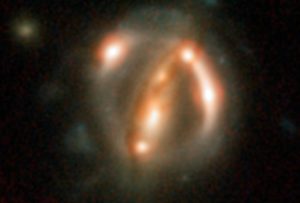New measurements of the rate of expansion of the universe give more different results. Discrepancies seem to become more and more significant. Is there something wrong with the way we measure the Hubble’s Constant or is there something wrong with the way we conceive the Universe and the dynamics of the cosmos?
Maybe both. But I think the second question is more true and more relevant to try to explain why the current measured values of this important natural constant are so far apart.
The Hubble’s Constant describes the expansion of the universe (in kilometers per second per megaparsec) and give us the possibility to make hypotheses about the size and age of the universe and estimate distances between objects in the cosmos.

That Hubble’s Constant is not constant in time is a science fact since the observation of the acceleration of the expansion of the Universe. But I think that its (supposed) constancy in space is not a scientific fact, and it comes from a profound misconception about the true nature of the the (derived) field we call space-time, or, even more, from a incorrect comprehension of the nature of the entire Physical Reality.
Hubble’s law tell us that the recessional velocity is proportional to the distance to distant bodies. As we can see in a medium subject to uniform expansion. This conception implies uniformity, homogeneity, isotropy, at least when viewed on a large enough scale. No special places, both for the parts of the cosmos that we see in expansion and for the part that include the observer. This is the Cosmological Principle. It implies that the forces act uniformly throughout the Universe. But, this its true only if we consider the Fundamental Force acting of the Elementary Field. All the derived forces (as gravity) don’t act uniformly. They (always) relative intensities are determined by the shape of the organization of the Elementary Field itself, in other words, the derived fields associated to those derived forces.
In my opinion, Hubble constant is not constant also in space dimensions, so it cannot be considered a support to the Big Bang model. The polarization of the dispute on cosmological models between static and Big Bang, for me, is one of the most destructive errors in cosmology. It has addressed all the further researches in a theoretical cul de sac that has produced inflation, the standard cosmological model, and a full series of theories father and farther from the observation. I thing that even the observation, of better, the way we observe the Universe has been deeply influenced by that wrong ideas.
So, let’s go. No static Universe, no Big Bang. To explain what we see in the Universe, a third way is needed. Let’s call it: the Evolutionary Cosmological Model (ECM). In this model we can “easily” accomodate phenomena like the expansion of the cosmos and its acceleration in time, the inconstancy of Hubble’s Constant in space, as well as in time, the strange super homogeneity of CMB, the existence of well formed cosmic structures in the early Universe, just a few hundred millions years from the supposed birth date on the Universe. And it is not enough. There are rooms for a dark matter not made of particles, that does not need to reject of modify gravity, and the strange stuff we call dark energy, theoretically required to account for the acceleration of the cosmic expansion.
In conclusion, even if – by definition – we postulate that it is absolutely flat as a whole in all its infinite extension, space-time is not uniform. It does not have a uni-form, a unique form, the same shape in all places, even at the largest scales. It appears to us as uniform, because we can span a sufficiently large portion of the (for me, infinite) Universe. So, at medium and small scales, we clearly see that space-time is not uniform. We see immense cosmic structures, super-clusters, cluster, galaxies, stars and planets…
At these scales, a lack of uniformity is the cause and, at the same time, the effect of the presence of those cosmic structures.
At the larger scales, a more slight non-uniformity is the cause and the effect of the existence of extremely large structures and the entire dynamics of the (infinite and unlimited) Universe as a whole.
Image description: Bright arcs: Hubble Stace Telescope image of a distant quasar that has been gravitationally lensed. This image was part of this latest study. (Credits: ESA/Hubble/NASA/Suyu et al)
Image credits: Nasa

